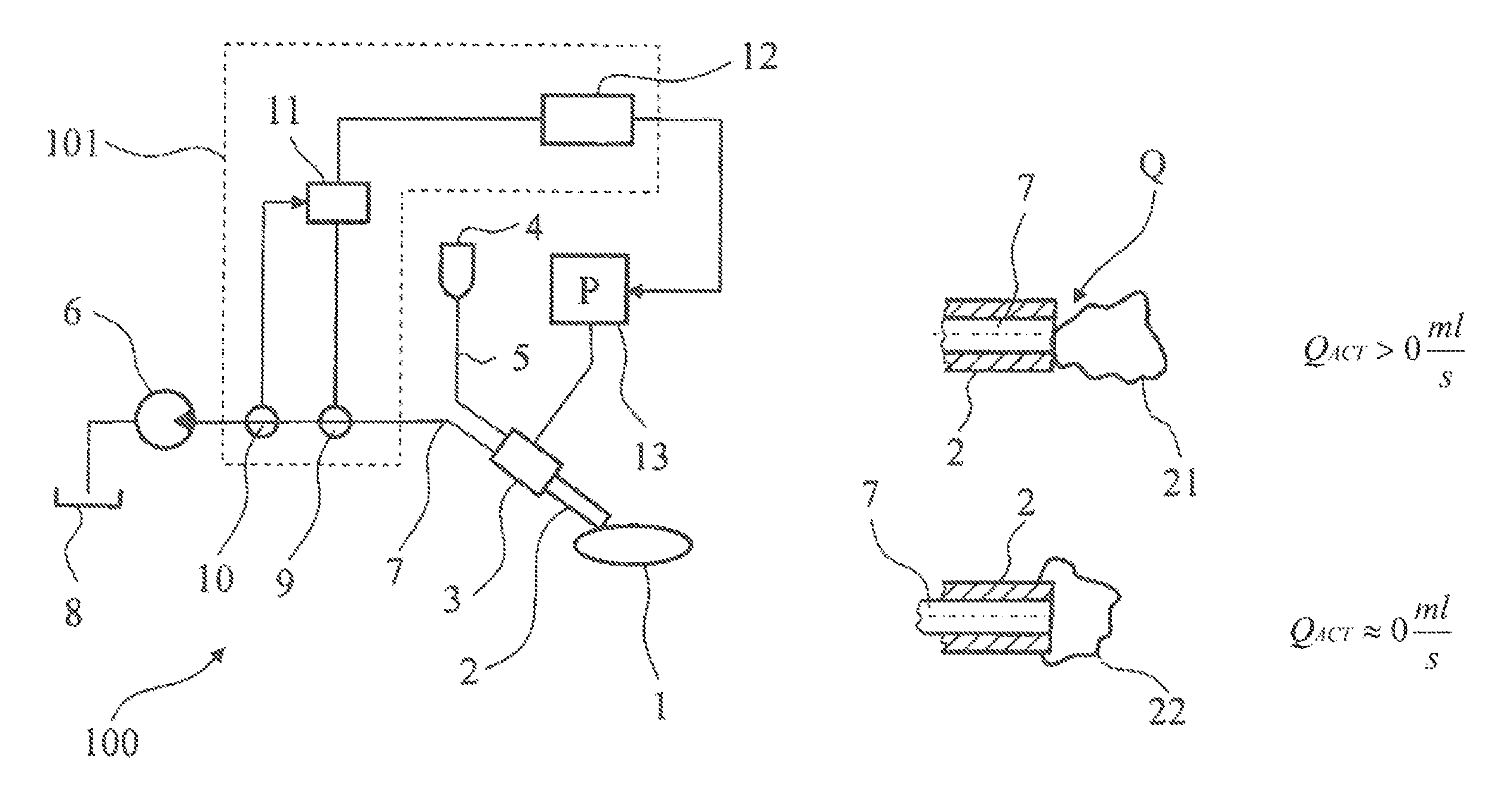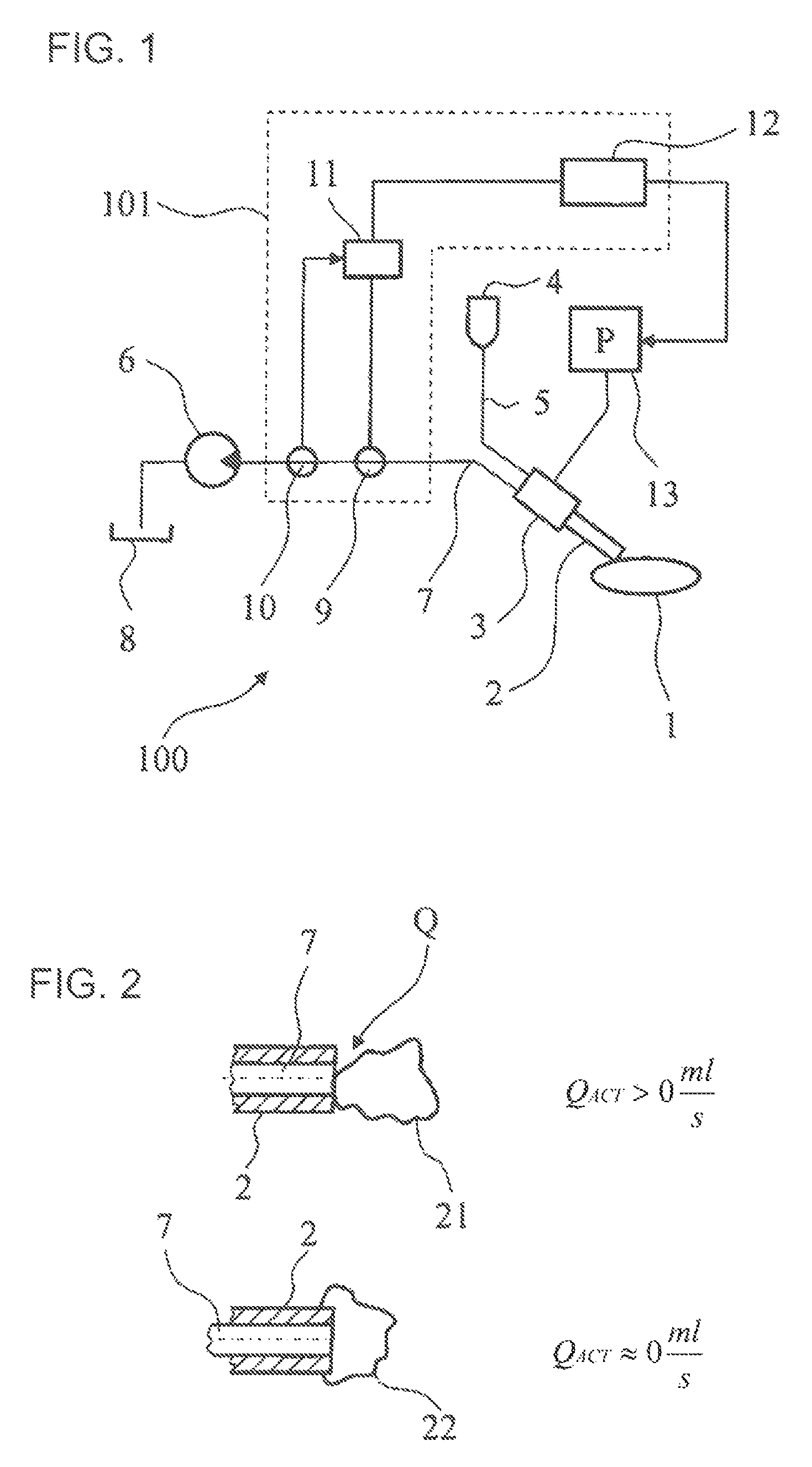Ophthalmic surgical system and a control apparatus therefor
a control apparatus and ophthalmic surgery technology, applied in the field of ophthalmic surgery system and control apparatus therefor, can solve the problems of reducing the probability of injuring healthy tissue in the surroundings of the needle, reducing the probability of injuring the patient's eye, and reducing the quantity of supplied energy, so as to reduce the risk of eye damage to the patien
- Summary
- Abstract
- Description
- Claims
- Application Information
AI Technical Summary
Benefits of technology
Problems solved by technology
Method used
Image
Examples
Embodiment Construction
[0021]FIG. 1 shows a schematic illustration of an embodiment of an ophthalmic surgical system 100 with a control apparatus 101. An eye lens 1 to be treated is worked upon by a needle 2 of a handpiece 3 during phacoemulsification. Irrigation fluid flows, from an irrigation fluid container 4, through an irrigation line 5 to the handpiece 3 and there to a needle 2, the tip of which touches the eye lens 1. The supplied irrigation fluid and the broken-up lens particles are suctioned away via an aspiration line 7, which leads to an aspiration pump 5 through the needle 2 and the handpiece 3. The fluid and the particles are then caught in an aspiration container 8. Coupled to the aspiration line is a through-flow determination device 9, via which it is possible to determine an actual value of a fluid flow. Furthermore, an occlusion determination device 10 is provided along with the aspiration line 7, wherein the former can be used to determine whether there is an occlusion by a particle of ...
PUM
 Login to View More
Login to View More Abstract
Description
Claims
Application Information
 Login to View More
Login to View More - R&D
- Intellectual Property
- Life Sciences
- Materials
- Tech Scout
- Unparalleled Data Quality
- Higher Quality Content
- 60% Fewer Hallucinations
Browse by: Latest US Patents, China's latest patents, Technical Efficacy Thesaurus, Application Domain, Technology Topic, Popular Technical Reports.
© 2025 PatSnap. All rights reserved.Legal|Privacy policy|Modern Slavery Act Transparency Statement|Sitemap|About US| Contact US: help@patsnap.com



